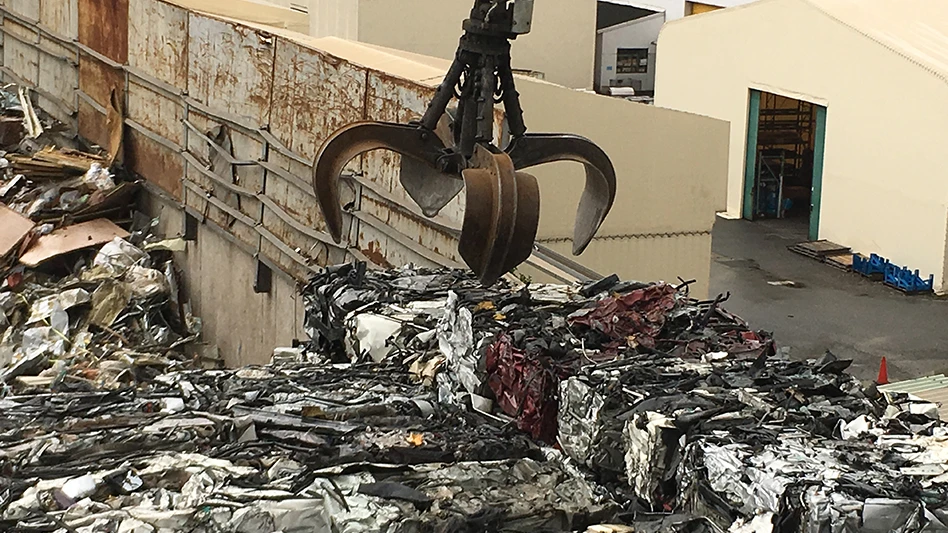
Recycling Today archives
In January, mills did not get the trap door-style price plunge they’d reportedly requested, with prices for the most commonly traded grades trending sideways or dropping slightly.
The following month, mill buyers in several regions of the United States again requested lower prices, this time in the $30-per-ton range, according to Davis Index.
Attempting to influence ferrous scrap pricing by having prebuying period conversations with others in the industry is a longtime if unacknowledged part of the negotiating process.
Traditionally, steel company employees talk down the demand and value of scrap. Early this year, however, Cleveland-Cliffs President and CEO Lourenco Goncalves deviated from this pattern by asking aloud whether prime ferrous scrap grades were undervalued in the market.
In comments accompanying the Cleveland-based steelmaker’s 2023 results, Goncalves hinted the company’s electric arc furnace- (EAF)- based competitors could be cultivating an unfair advantage via questionable practices in the scrap market.
Regarding the 2024 landscape for Cliffs, which makes most of its steel with lower volumes of scrap via the blast furnace/basic oxygen furnace (BOF) route, Goncalves pointed to the price of scrap as a factor.
“Going forward, and assuming a fair scrap marketplace—free from artificial, provoked and hard-to-explain moves—with scrap demand growing and scrap supply shrinking, there is no good reason for scrap prices to go down,” he said.
Cliffs likely has two reasons to question—as well as ways to benefit from—high ferrous scrap prices: They raise the cost of doing business for competitors from the EAF sector, and Cliffs owns the Ferrous Processing & Trading (FPT) network of scrap yards.
When Cliffs announced its purchase of FPT in 2021, it noted the Detroit-based firm was among the largest processors and distributors of prime ferrous scrap in the U.S., representing approximately 15 percent of the domestic merchant prime scrap market.
Goncalves’ price scrutiny could be seen as a variation of the longstanding practice of urging buyers and sellers to hold fast to the position that favors them—this time with a mill executive favoring higher prices.
If mill buyers expect lower prices, however, they might need to convince scrap processors their inflows are high enough to create a supply surplus. They also may have to demonstrate that mill demand is in genuine decline.
On the demand side, steel production figures for the first six weeks of the year present a mixed picture. The output statistics, gathered by the Washington-based American Iron and Steel Institute (AISI) demonstrate a year-on-year decline but stability in the recent landscape.
In the week ending Feb. 10, output of about 1.7 million tons was down a full 5 percent from the comparable week in 2023. However, output was up by 0.5 percent from the previous week, and it has remained largely steady this winter.
According to AISI, domestic steel output was down by 1.4 percent year to date, which provides some ammunition to mill buyers seeking lower scrap prices.
In January, steady export buying contributed to domestic mill buyers being unable to get the price-per-ton discounts they requested.
In the first two weeks of February, overseas buyers remained active even as they kept an eye on negotiations in the U.S. to help determine how to price their bids to meet the market without greatly exceeding it.
According to Davis Index, that process led buyers in Turkey and India—two of the leading importers of U.S. scrap—to make bids a few dollars per ton short of or essentially even with what they paid in January for both bulk and containerized shipments.
At the 2024 Material Recycling Association of India (MRAI) convention in Kolkata, India, in late January, two panelists indicated that, in the meantime, India-based scrap buyers are looking toward Australia and Japan as a way of avoiding the Suez Canal/Red Sea trade route.
While European exporters could face the biggest hurdles as long as the Red Sea attacks continue, scrap exporters everywhere are facing freight rate hikes and potential container shortages that could become a bigger headache, according to a report from a freight services firm.
“As attacks on cargo ships in the Middle East continue and vessels are rerouted around southern Africa, we anticipate equipment shortages due to the lack of container repositioning in Asia for eastbound goods,” a California-based freight forwarder tells Germany-based Container xChange Solutions GmbH.
In the U.S., potential beneficiaries could be West Coast shippers, with the report adding, “Disruptions in the Suez, Red Sea passage and Panama Canal [where a drought has caused low water levels] will likely lead to increased demand for routing through the West Coast.”
Latest from Recycling Today
- BMW Group, Encory launch 'direct recycling’ of batteries
- Loom Carbon, RTI International partner to scale textile recycling technology
- Goodwill Industries of West Michigan, American Glass Mosaics partner to divert glass from landfill
- CARI forms federal advocacy partnership
- Monthly packaging papers shipments down in November
- STEEL Act aims to enhance trade enforcement to prevent dumping of steel in the US
- San Francisco schools introduce compostable lunch trays
- Aduro graduates from Shell GameChanger program





